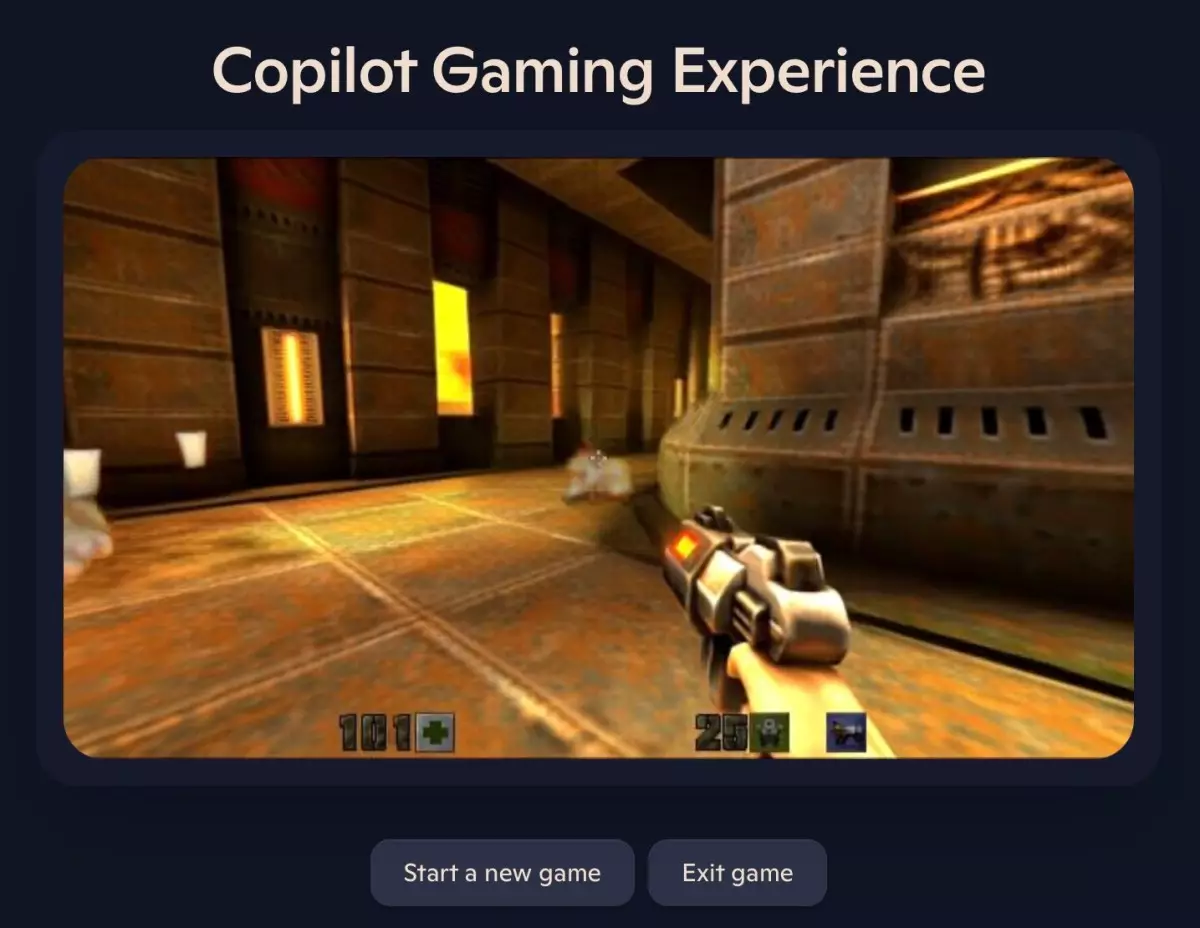In a bold move that combines nostalgia with cutting-edge technology, Microsoft recently unveiled a playable browser version of the iconic game Quake II. This initiative serves as a showcase for the potential of Microsoft’s Copilot AI platform, inviting players to experience a classic title through the lens of innovative artificial intelligence. While the concept is intriguing, it raises questions about the essence of gaming and whether AI can truly recapture the magic of traditional gameplay.
The demo enables users to explore a single level of Quake II using keyboard controls, though the experience is time-limited. Within a few short minutes, players can rediscover this vintage shooter that once dominated the gaming scene. While Microsoft describes this experience as an exciting interaction with their AI model, it becomes evident that the execution leaves much to be desired. The researchers posit that engaging with the AI through direct actions creates an immersive environment, but the limitations of this tech demo reveal cracks in the facade of their claims.
The Illusion of Interactivity
Drawing from a project aided by Microsoft’s acquisitions, the AI model uses Quake II’s framework to simulate gameplay actions like jumping, ducking, and shooting. In the words of the developers, players are allowed to traverse a simulated version of the original game, indulging in nostalgic moments that hark back to gaming’s golden age. Yet, their emphasis on the “research exploration” aspect makes it clear that this isn’t a polished product but rather a glimpse into future gaming possibilities.
Nonetheless, the demo suffers from significant shortcomings that undermine the user experience. Testers have found issues like static enemies, inconsistent health metrics, and most notably, a perplexing lack of object permanence. The AI occasionally forgets elements that aren’t within its immediate view for even the briefest moments. This may create unintended humorous situations where players can exploit the model’s shortcomings. For example, swiftly looking away and back might allow players to “spawn” enemies seemingly at will, making for a bizarre and disjointed gaming experience. Such flaws may be amusing for a short while, but they ultimately detract from the essence of engaging gameplay.
Critique from the Gaming Community
Prominent voices in the gaming world have been quick to critique this approach. Austin Walker, a notable writer and game designer, expressed disappointment, sharing a gameplay video where his experience was largely marred by being trapped in a darkened room. His frustrations reflect a broader sentiment within the gaming community: that the effort is more of a gimmick than a genuine improvement to indie or classic gaming experiences. Walker’s thoughts resonate with players as he highlights the complexities of game design that AI may fail to grasp.
Walker also took aim at the larger implications of using AI for game preservation, cautioning against the notion that such technology could universalize classic gaming experiences. He argued that the intricate interplay of code, design, art, and sound in games like Quake is what fosters unique and captivating gameplay. The nuances that make games enjoyable, he claims, could be lost in translation if AI attempts to replicate them without understanding.
The Road Ahead: A Balancing Act
Microsoft’s venture into AI-powered gaming remains a mix of promise and peril. While it undeniably opens a door to reimagining how classic games are presented to new generations, the reality of current AI capabilities suggests that there is still a long way to go. The conversation surrounding AI’s role in game development and preservation is still evolving. The challenge will be in striking a balance between leveraging technology and respecting the original artistry and intentions behind beloved games.
The game industry stands at a crossroads between nostalgia and innovation. As developers wade into the waters of AI, the hope is that they will find ways to enhance—not dilute—the core experience that players cherish. Only time will tell if endeavors like Microsoft’s are a part of a transformative journey or merely a fleeting experiment in gaming tech. What is crystal clear, however, is that in the age of AI, the gaming realm will never be quite the same again.

